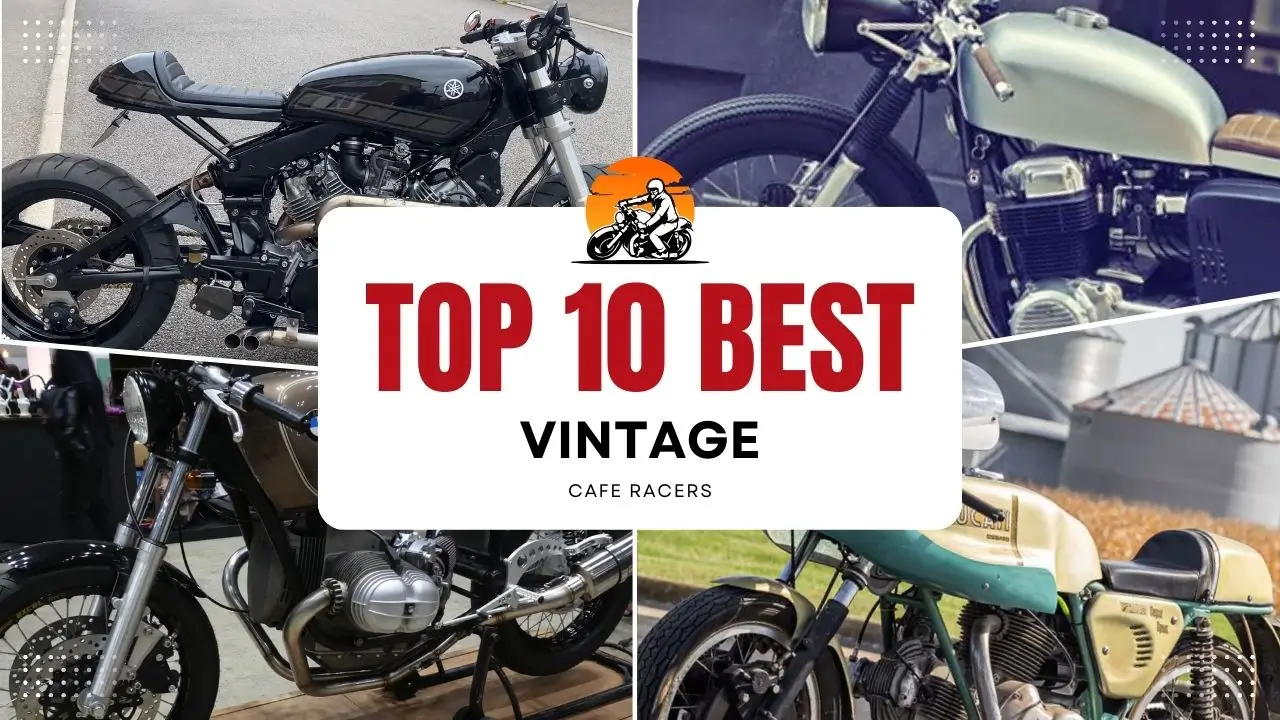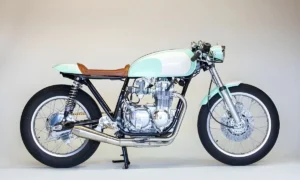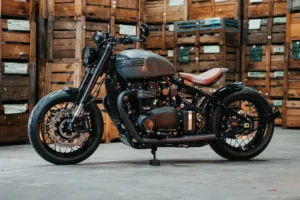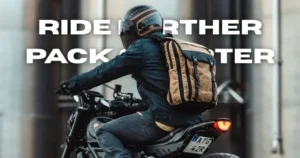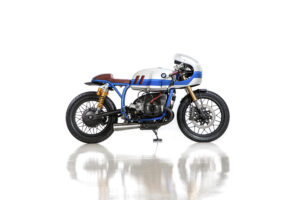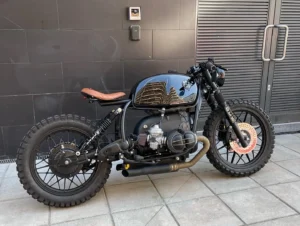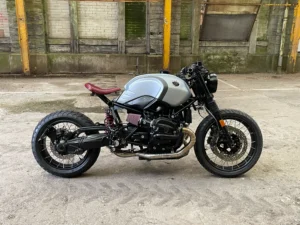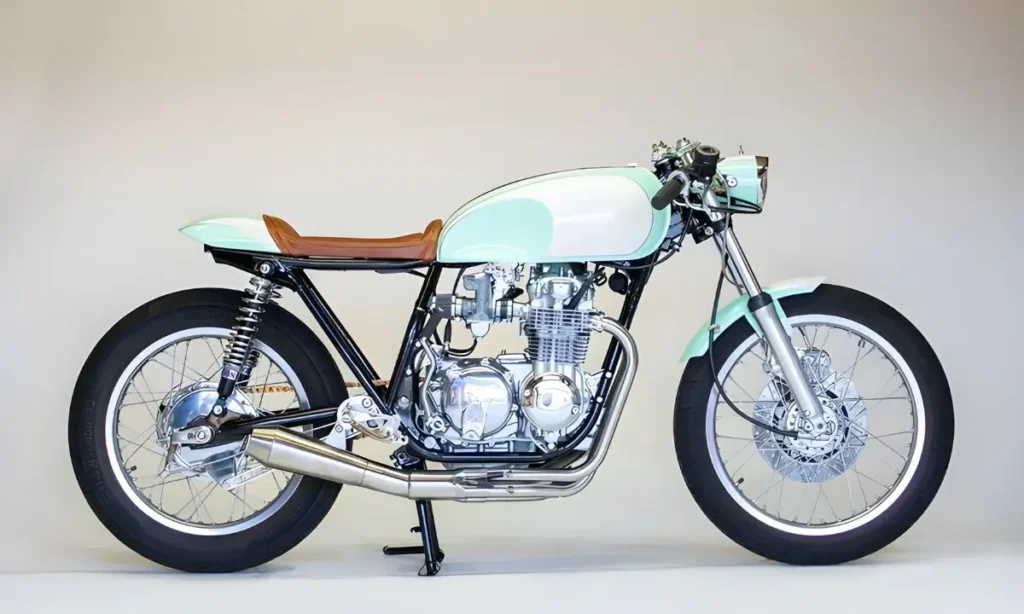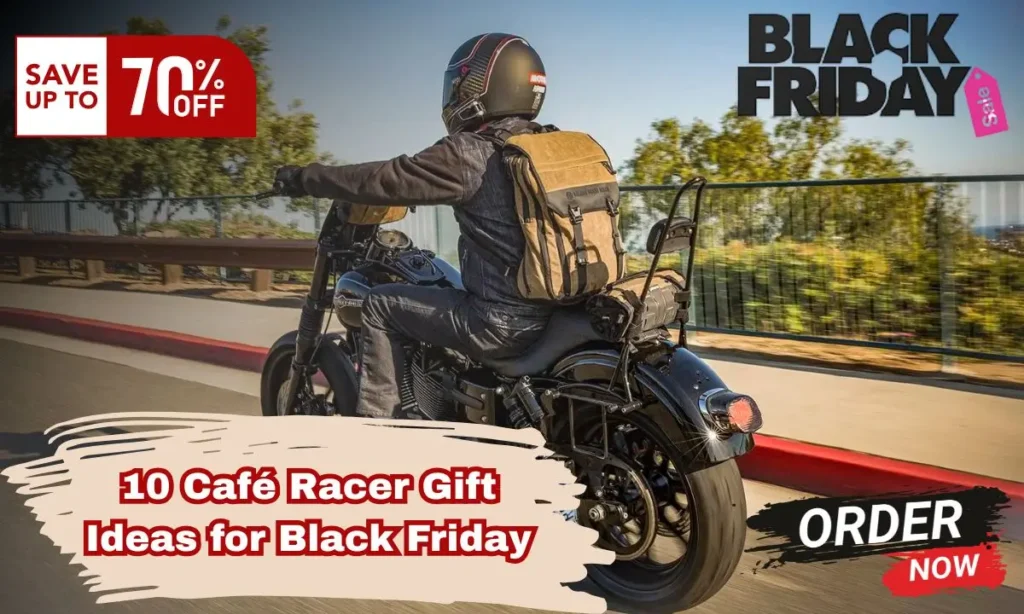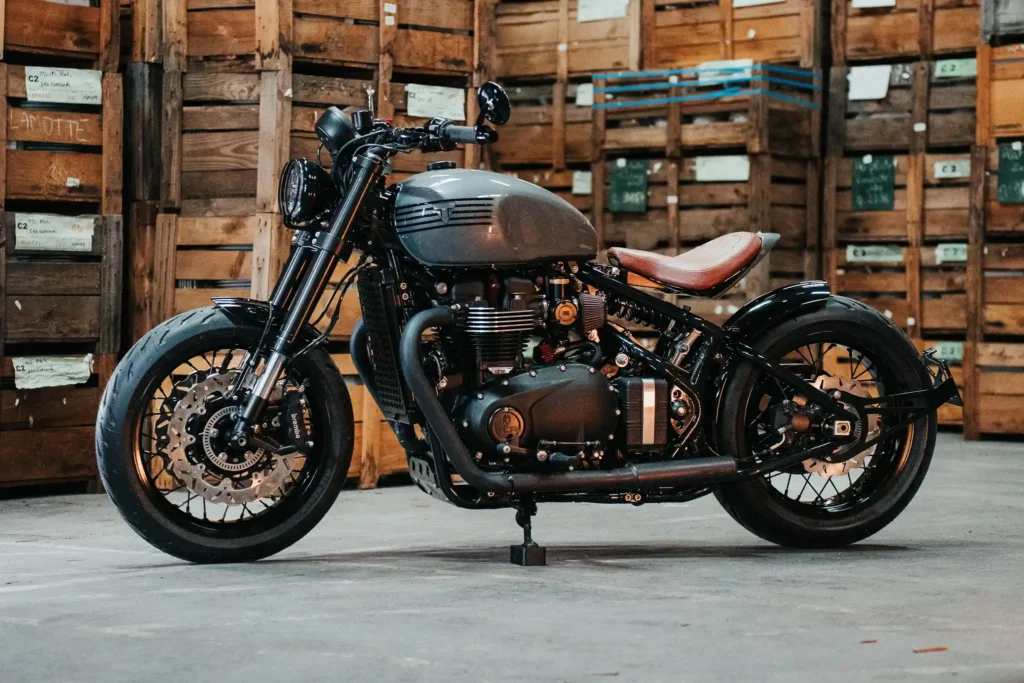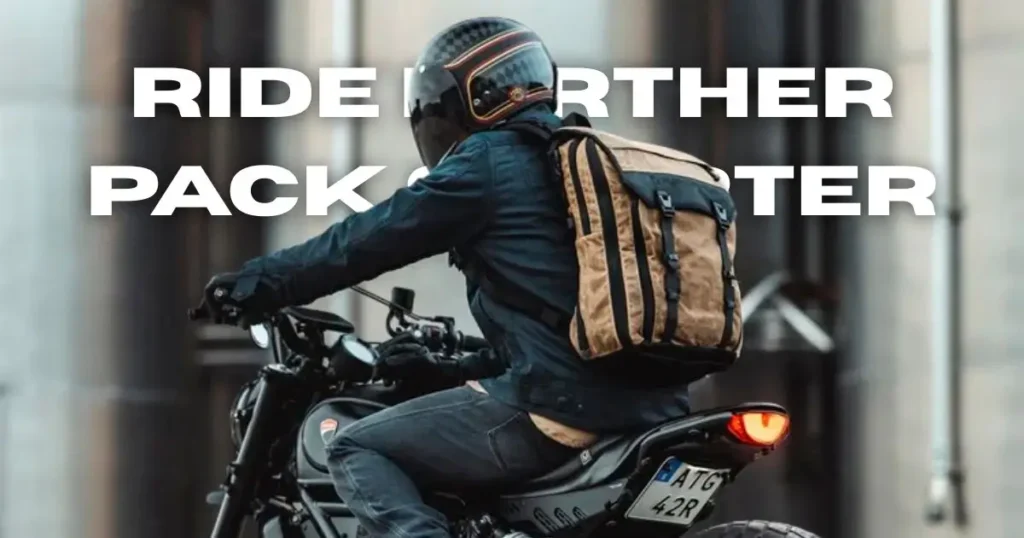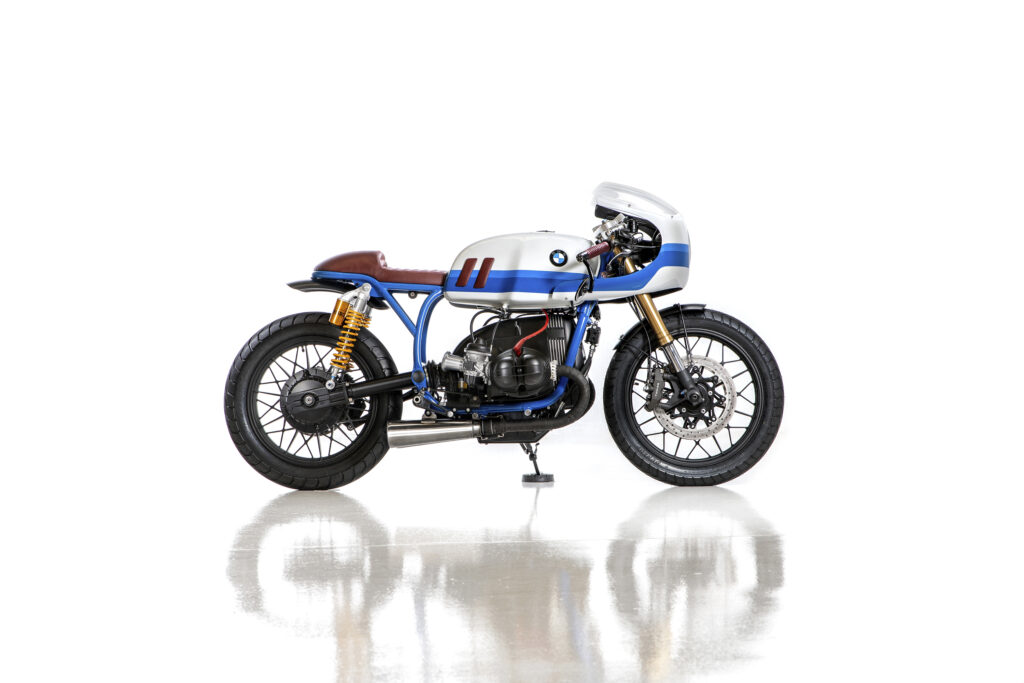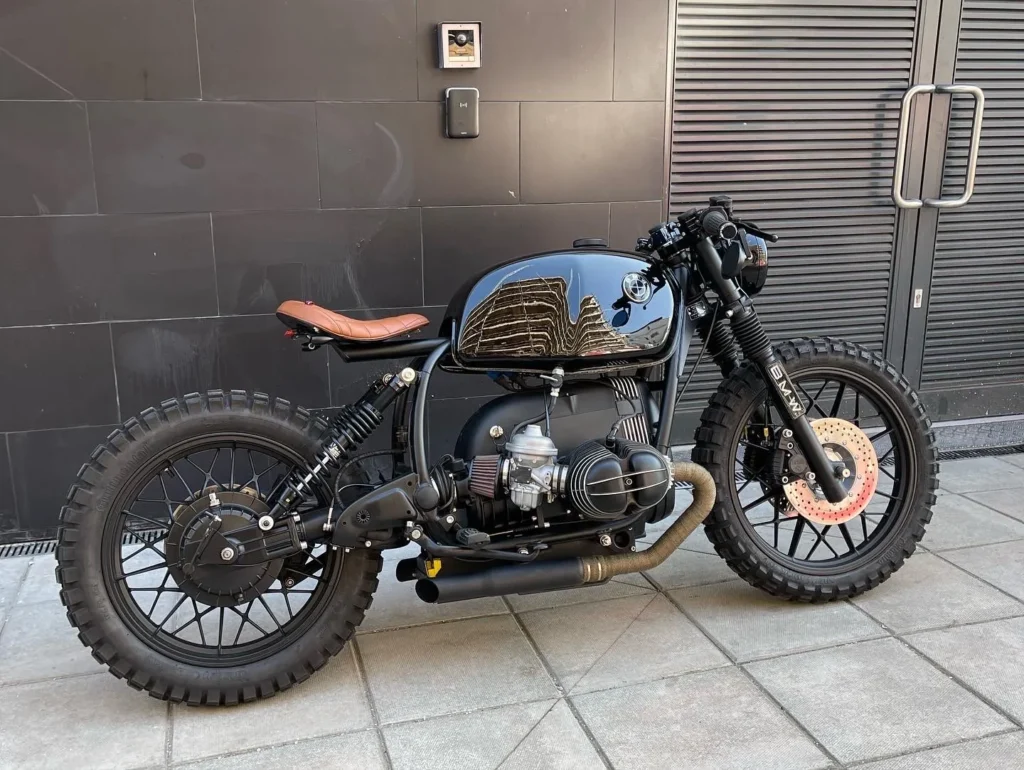Table of Contents
ToggleVintage cafe racers were never built for comfort or convenience. They were made to be simple, fast, and focused. No extra parts. No electronics. Just the essentials and a clear goal.
These cafe racers came from a time when riders worked with limited tools and tight budgets. They removed weight, replaced stock components, and built bikes that went faster and looked sharper. Most were built in garages, not factories.
This list covers ten vintage cafe racers that helped shape the style. Each one made an impact. Each one still deserves respect today.
1. 1969 Honda CB750
The CB750 changed everything. Before this bike, superbikes didn’t really exist. Honda gave riders a four-cylinder engine with 736cc, producing around 68 horsepower. It had an electric start, front disc brake, and a five-speed gearbox. For the time, that was revolutionary.
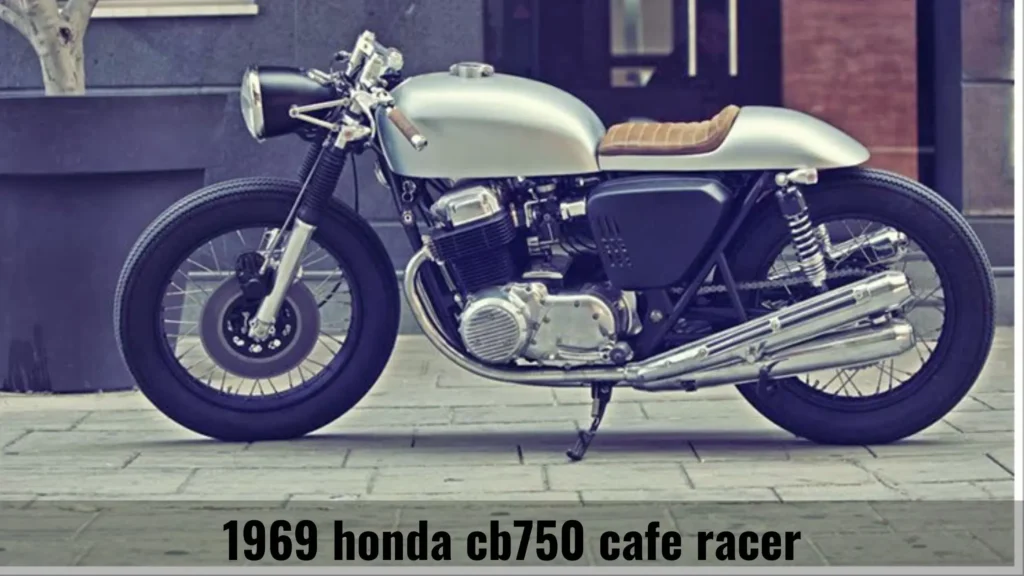
It was smooth, fast, and reliable. That last part mattered. British and American bikes had style, but they often leaked oil or broke down. The CB750 didn’t.
It quickly became a favorite among custom builders. Stripped down, with clip-on bars and a slim seat, the CB750 turned into a near-perfect cafe racer. Its engine had enough power. Its frame was easy to work with. Parts were available. And it looked right.
Honda didn’t design it to be a cafe racer. Riders made it one. That says everything.
2. 1970 Triumph Bonneville T120
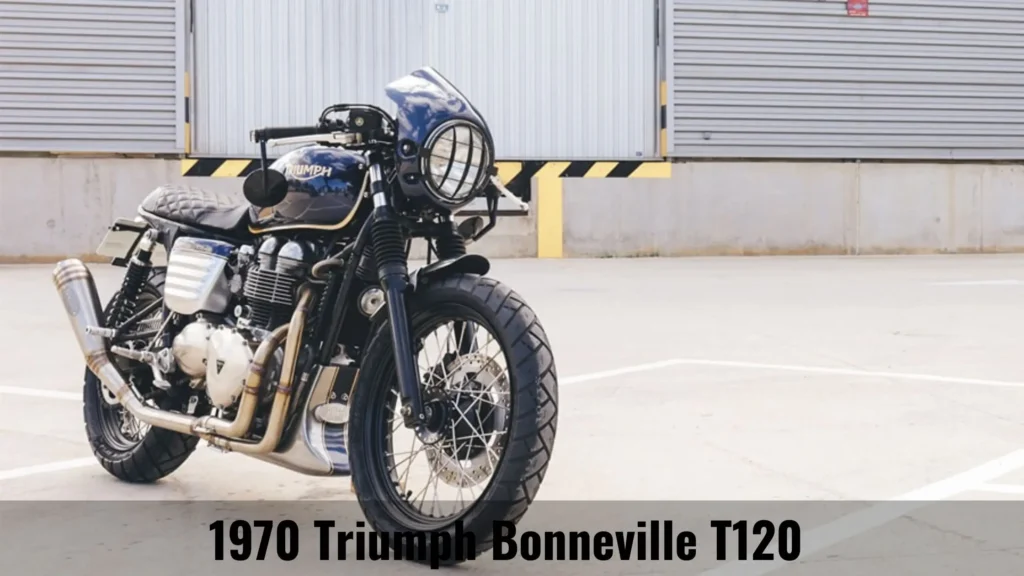
The Triumph Bonneville T120 was one of the most important British motorcycles of its time. It had a 649cc parallel-twin engine with twin carburetors. It made around 46 horsepower and could reach speeds close to 110 mph.
The T120 was light, fast, and easy to tune. That made it a natural choice for the cafe racer scene. Riders removed the excess weight, swapped the bars, and turned it into a machine built for short, fast rides between cafés.
Its name came from the Bonneville Salt Flats, where speed records were set. That name meant performance. And the T120 delivered.
It also had a clean, classic look. Slim fuel tank. Wire-spoke wheels. Polished metal. It didn’t need much work to look the part. Even today, many builders start with a T120 frame when restoring or creating a vintage cafe racer.
3. 1974 Ducati 750 Super Sport
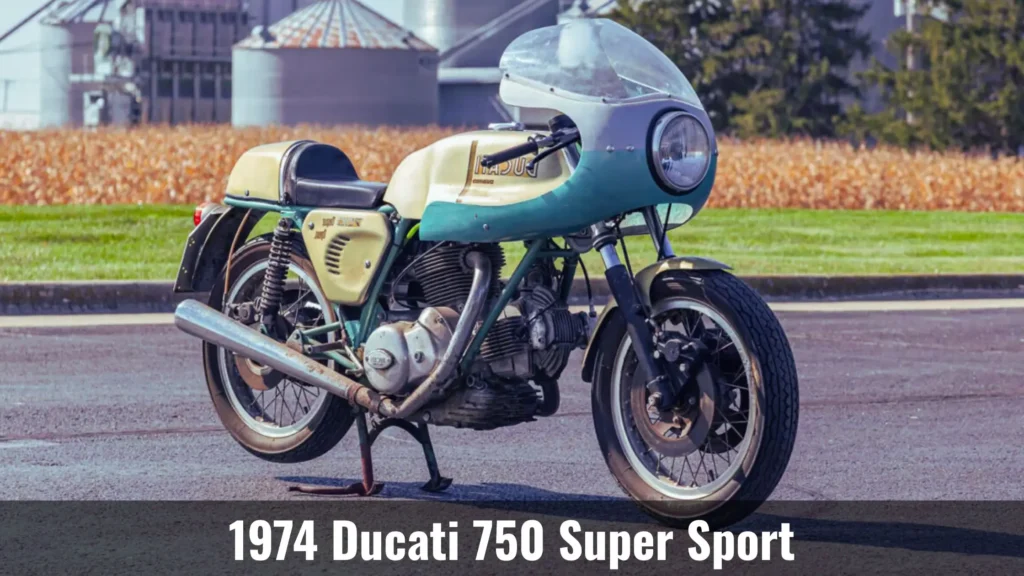
The Ducati 750 Super Sport came from the racetrack. Its design was based on the bike that won the 1972 Imola 200, where Ducati shocked the racing world. The production version arrived in 1974 with a 748cc L-twin engine and desmodromic valve system. It made around 72 horsepower and had a top speed near 125 mph.
This bike was light, fast, and built to handle. It used a steel trellis frame and had a low, aggressive stance. The engine layout gave it a narrow profile, which fit the cafe racer style well.
It was not easy to get. Ducati built only a few hundred units. That made it rare then, and even more valuable now.
The 750 Super Sport blended racing performance with road use. It had the look, the sound, and the speed. A true Italian classic with real heritage.
4. 1968 Norton Commando Fastback
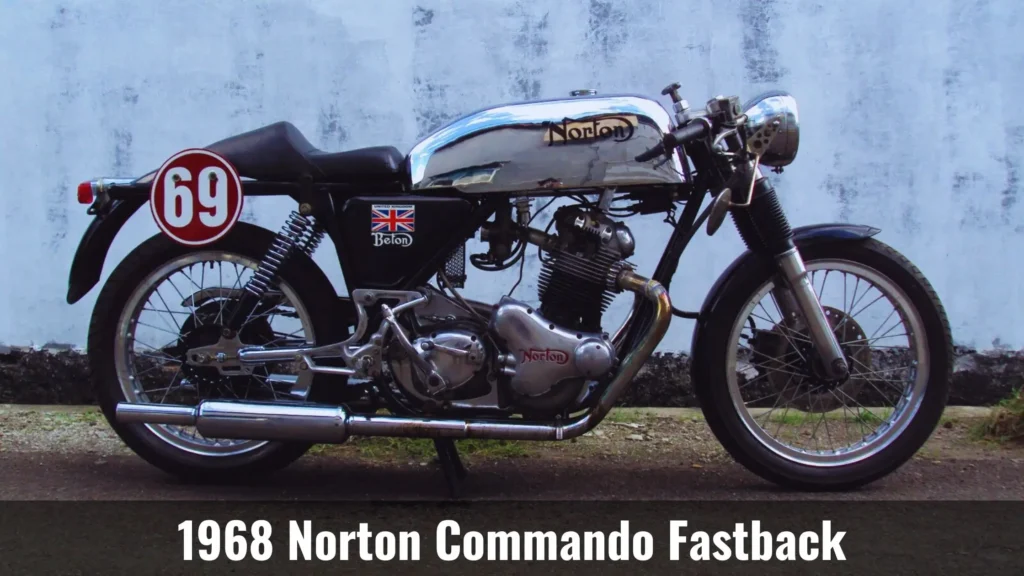
The Norton Commando Fastback arrived in 1968 and quickly earned praise for its power and smooth ride. It used a 745cc parallel-twin engine that produced around 58 horsepower. Top speed was close to 115 mph.
What set the Commando apart was its handling. Norton introduced the “Isolastic” frame system, which reduced engine vibration without hurting performance. That gave the bike a smoother feel at high speeds compared to earlier British twins.
The Fastback version had a long tail section and a compact, sporty shape. Its design helped it stand out. Many riders in the cafe racer scene used the Commando as a base. It was fast, narrow, and had a solid chassis.
The engine was reliable for its time. Parts were available. And the sound of the twin engine made it even more appealing.
The Commando helped keep Norton alive in a competitive market.
5. 1973 Moto Guzzi V7 Sport
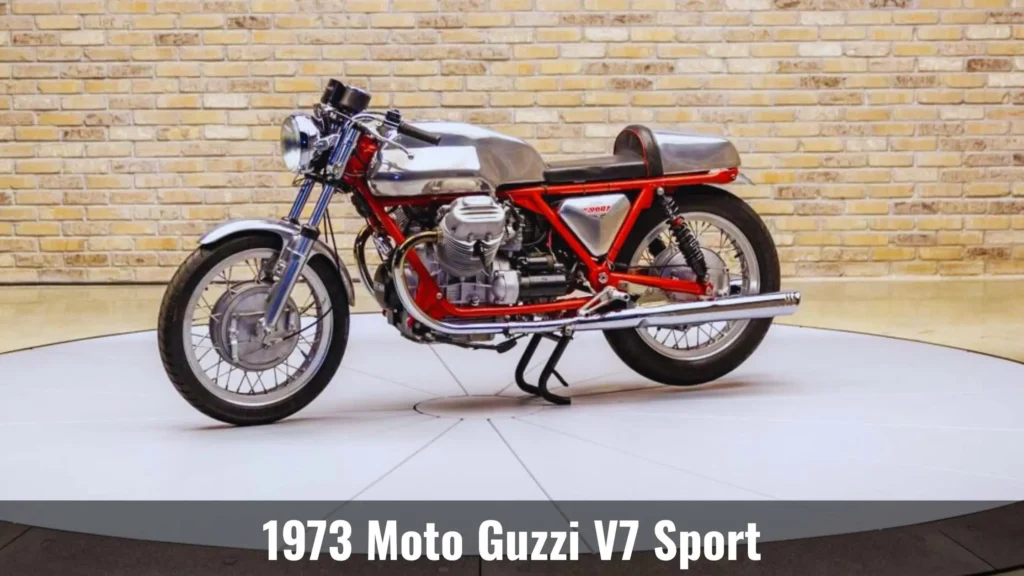
The Moto Guzzi V7 Sport was the brand’s first real sport bike. It used a 748cc transverse V-twin engine, mounted across the frame. This setup gave it a unique look and a low center of gravity. The engine made about 70 horsepower and could push the bike to 120 mph.
It had a five-speed gearbox and shaft drive, which was rare in sport motorcycles at the time. The frame was designed by Lino Tonti, and it was both strong and light. The bike also had low clip-on handlebars and rear-set pegs, giving it a proper sport riding position.
The V7 Sport stood out from British and Japanese rivals. It had solid build quality, stable handling, and a deep, distinctive exhaust note. Riders who wanted something different often chose the V7.
It became a strong base for custom cafe racer projects.
6. 1977 Harley-Davidson XLCR
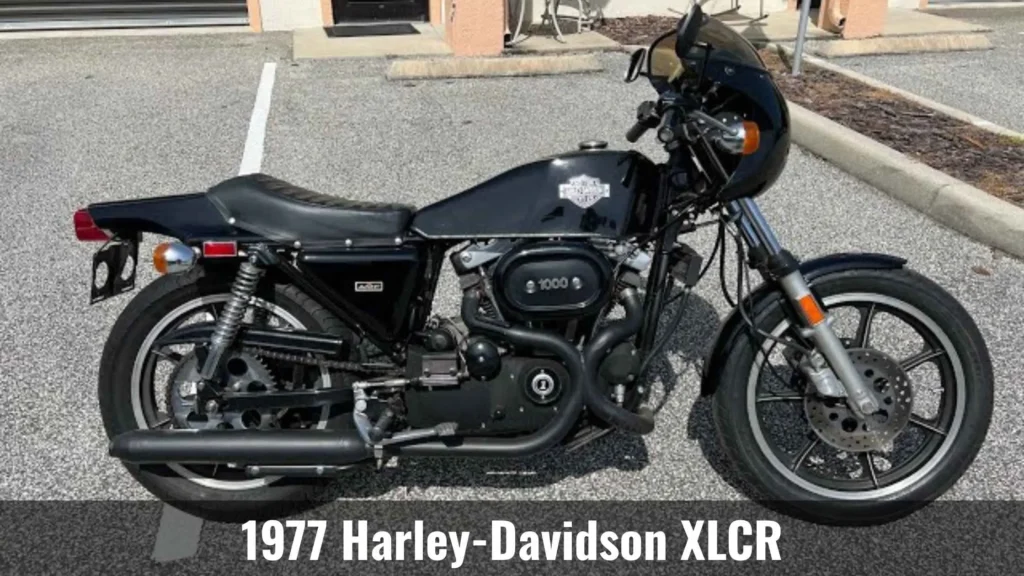
The Harley-Davidson XLCR was introduced in 1977 as the company’s first and only factory-built cafe racer. It was based on the Sportster platform and powered by a 997cc V-twin engine. The engine produced around 61 horsepower and had a top speed near 110 mph.
The XLCR stood out from other Harleys of the time. It had blacked-out styling, a small front fairing, a fiberglass tail section, and a two-into-one exhaust. The bike also came with rear-set foot controls and a longer frame for improved stability.
Harley designed the XLCR to compete with European and Japanese sport bikes. But it didn’t sell well at launch. Riders weren’t ready for a Harley that looked and felt so different.
Today, the XLCR has become a rare and respected machine. Collectors value it for its unique design and limited production.
It remains Harley’s boldest experiment in the cafe racer world.
7. 1972 BMW R75/5
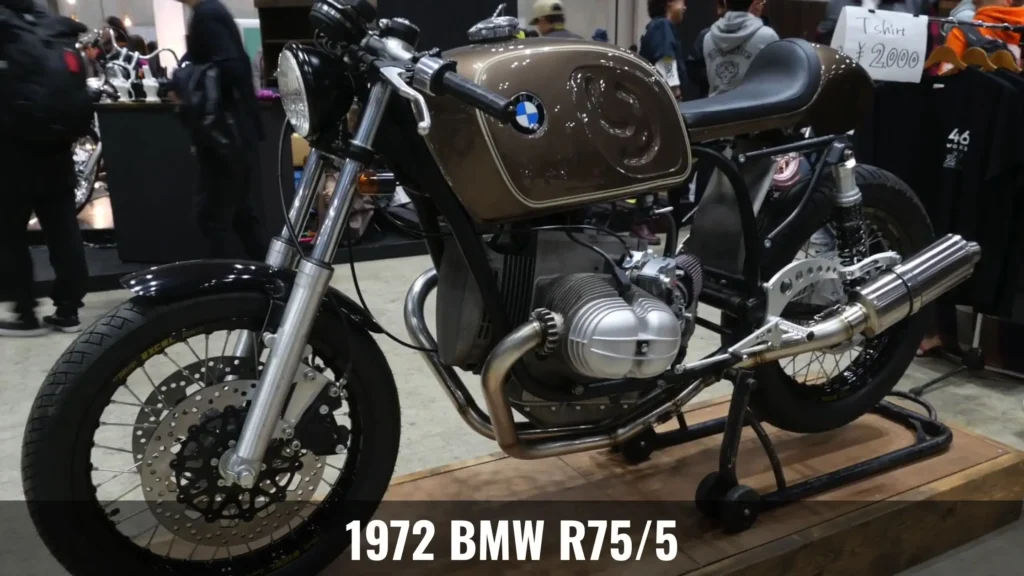
The BMW R75/5 was part of a new generation of motorcycles from BMW. It came with a 745cc air-cooled boxer twin engine that produced around 50 horsepower. Top speed reached close to 110 mph. It used a four-speed gearbox and shaft drive.
The engine design gave the bike a flat profile with good balance. The low center of gravity made it stable at speed. It was also reliable, which made it popular with long-distance riders.
The R75/5 had a steel frame and telescopic front forks. It came with a large round headlamp and a classic fuel tank with chrome side panels. The build quality was high, and the finish was clean and simple.
Although not a cafe racer from the factory, many riders modified the R75/5. Its strong engine, solid frame, and unique style made it a good base for custom cafe builds.
8. 1979 Kawasaki Z1-R
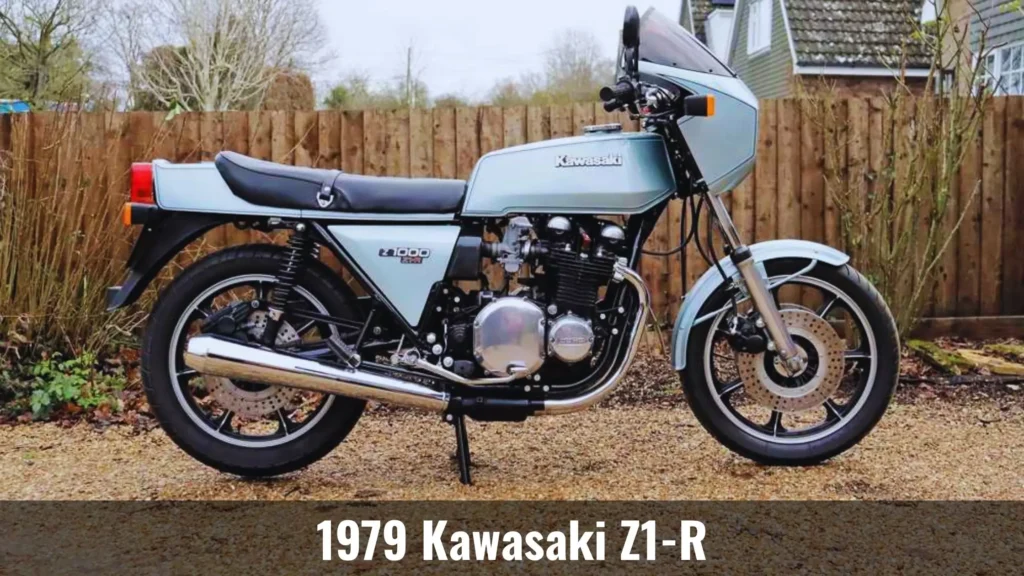
The Kawasaki Z1-R was a sport-oriented version of the original Z1. It came with a 1015cc inline-four engine that produced around 90 horsepower. It could reach a top speed of about 130 mph. This made it one of the fastest production motorcycles of its time.
The Z1-R featured a factory-fitted front fairing, flat handlebars, and a stretched fuel tank. It had a square-style fuel tank and tail section, giving it a sharp and aggressive look. The bike also used dual front disc brakes and a single rear disc for improved stopping power.
Its engine was smooth, strong, and durable. Riders trusted it for both daily use and high-speed runs. Custom builders liked its power and straight-line frame, which made it easy to convert into a cafe racer.
The Z1-R blended raw power with solid engineering. It became a favorite for serious riders.
9. 1981 Yamaha XV920R
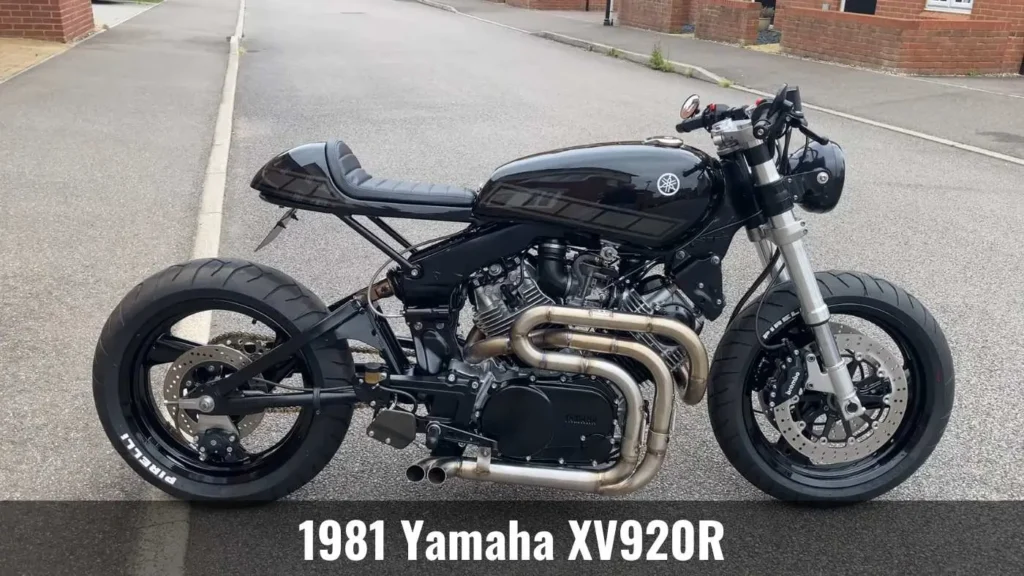
The Yamaha XV920R entered the market in 1981 as a middleweight sport-touring motorcycle. It featured a 920cc air-cooled V-twin engine, producing around 65 horsepower. Top speed was close to 110 mph. It came with a five-speed transmission and shaft drive.
The engine had a 75-degree layout, and the frame used a monoshock rear suspension, which was advanced for the time. The XV920R also had a stamped steel backbone frame and cast alloy wheels, including a unique enclosed rear wheel.
It was not a traditional cafe racer from the factory, but its basic form appealed to custom builders. The low stance, narrow engine, and solid torque delivery made it a good platform for modifications.
Over the years, the XV920R earned respect in the custom scene. Many builders used it to create unique and functional cafe-style machines with strong road performance.
10. 1975 Laverda 750 SFC
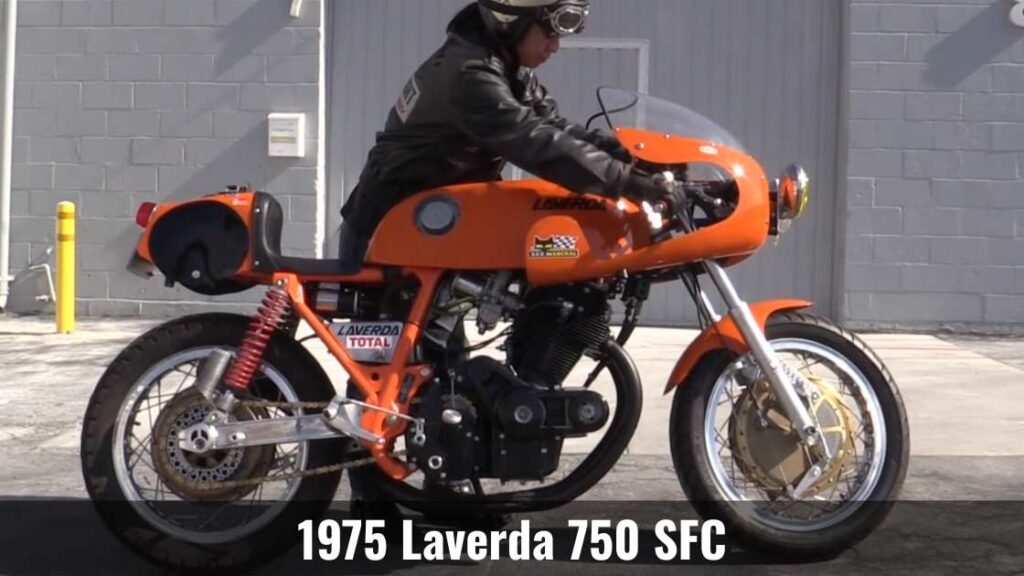
The Laverda 750 SFC was a factory-built race bike made for endurance competition. It used a 744cc parallel-twin engine that produced around 75 horsepower. Top speed was near 130 mph. The engine had a five-speed gearbox and twin Dell’Orto carburetors.
SFC stood for Super Freni Competizione, meaning “Super Brakes Competition” in Italian. The bike used high-performance drum brakes at first, later replaced by dual front discs. It had an orange fiberglass fairing, alloy wheels, and a slim racing seat.
Laverda hand-built each unit in limited numbers. Most went directly to private racers. Only a few hundred were made, which makes original SFC models rare and valuable today.
The 750 SFC was fast, reliable, and built to compete. Its performance, sound, and style made it one of the most respected Italian machines of its time.
Conclusion
These vintage cafe racers represent a specific time in motorcycling. Each one was built with purpose—lightweight, fast, and focused. They were not designed for comfort or show. They were made to perform.
Every cafe racer on this list played a part in shaping the style and attitude that still influence custom builds today. They continue to hold value not just as collectibles, but as bikes that riders still use, modify, and respect.
They are not outdated. They are proven. These are the bikes that helped define what a real cafe racer is.

